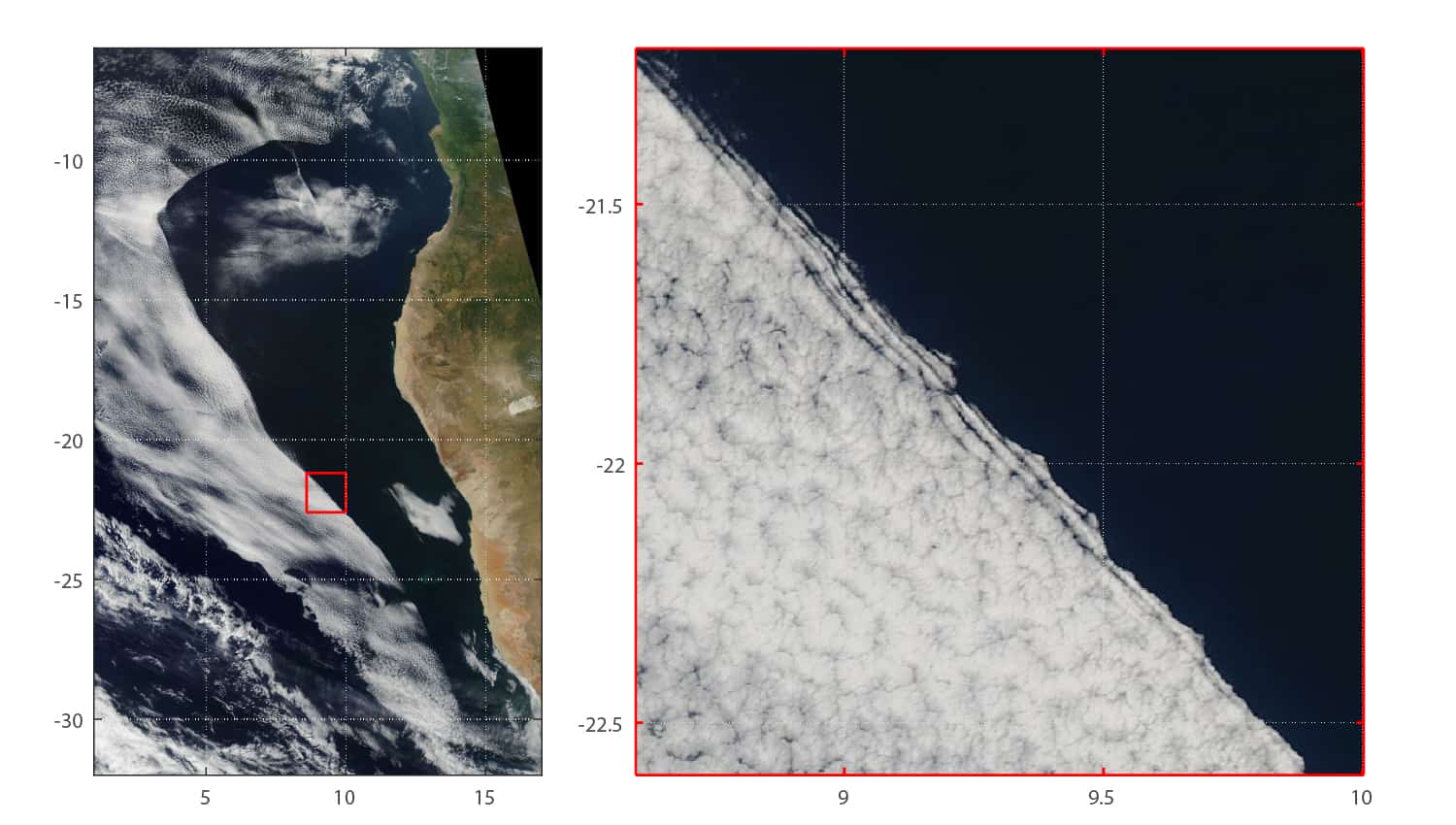
Rapid clearances in cloud coverage in the south-east Atlantic Ocean could be caused by pulsing atmospheric gravity waves originating from the African mainland. Using satellite images, a research team led by Sandra Yuter at North Carolina State University in the US explored the atmospheric mechanisms involved in the cloud dissipation for the first time. Their work could become crucial in understanding heating processes in the Earth’s atmosphere.
Between April and June, satellite images have revealed that large areas of stratocumulus clouds off the coast of south-western Africa often rapidly erode over periods of just around 15 minutes. According to the images, the clouds are partially or completely cleared along sharply-defined transition lines, which can be hundreds or even thousands of kilometres long. The lines propagate westwards at speeds of 8 to 12 metres per second, travelling as far as 1000 kilometres from the coast.
In their study, Yuter’s team concluded that the wave-like patterns exhibited by the clouds extend too far into the ocean to be caused by heat transfer from land. Instead, they proposed that the effect is caused by gravity waves – oscillations in the buoyancy of the atmosphere that propagate due to the force of gravity. Such gravity waves often appear as transitions from overcast to clearer skies, or from thicker to thinner clouds, and previous studies have shown that gravity waves can create clouds. Until now, however, the mechanisms involved in reducing cloud cover have not been widely studied.
Yuter and colleagues suggested that if gravity waves are the true cause of the cloud dissipation, they are most likely to be triggered by the interaction between offshore winds flowing perpendicular to the African coastline with the more stable marine boundary layer in the atmosphere. A train of regular gravity waves is then created due to offshore breezes being consistently generated every day. The enhanced atmospheric turbulence from these wave trains causes warm, dry air from the upper troposphere to move down to the cloud layer, quickly dispersing cloud coverage.
Since clouds reflect heat from the Sun, giving them a critical role in cooling the Earth’s climate, the research could provide important insights into creating models that accurately predict atmospheric heating. Yuter’s team acknowledge that this will require more targeted observations of the atmosphere of the south-east Atlantic, using techniques including dropsondes, airborne radars, and lidar measurements. In future studies, the researchers hope to use a combination of observations, re-analysis and atmospheric modelling on smaller scales to confirm their proposal.
Yuter and colleagues report their findings in Science.



